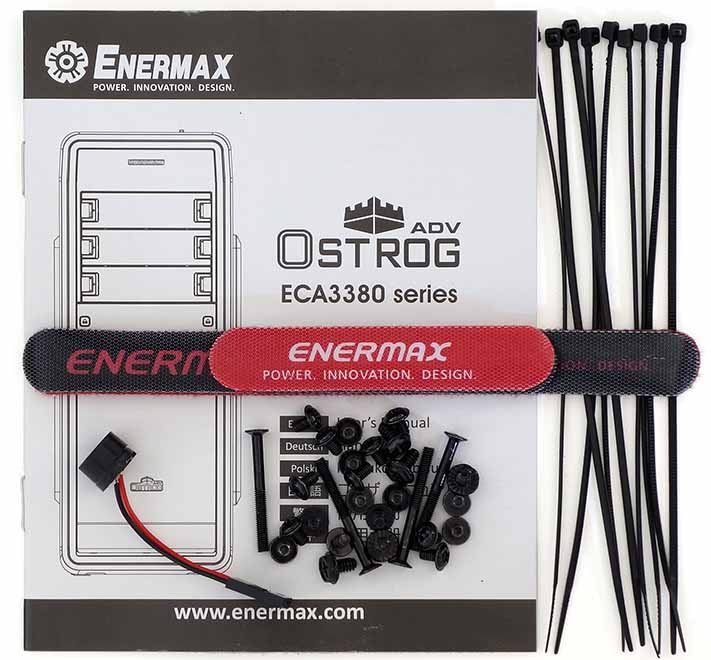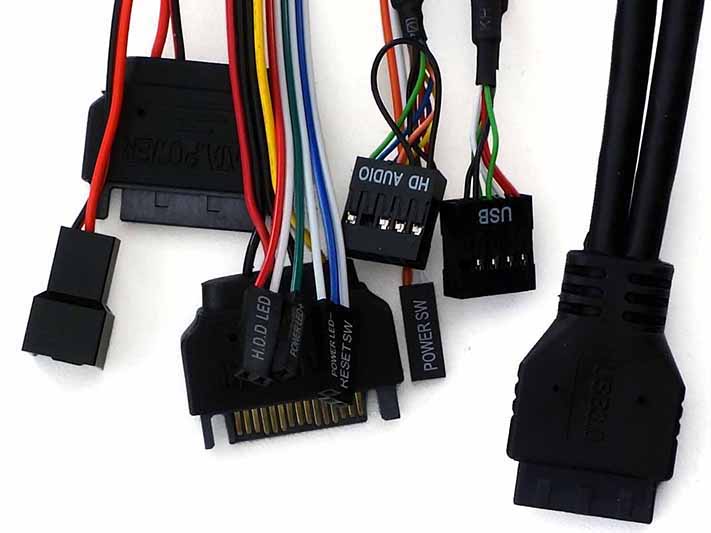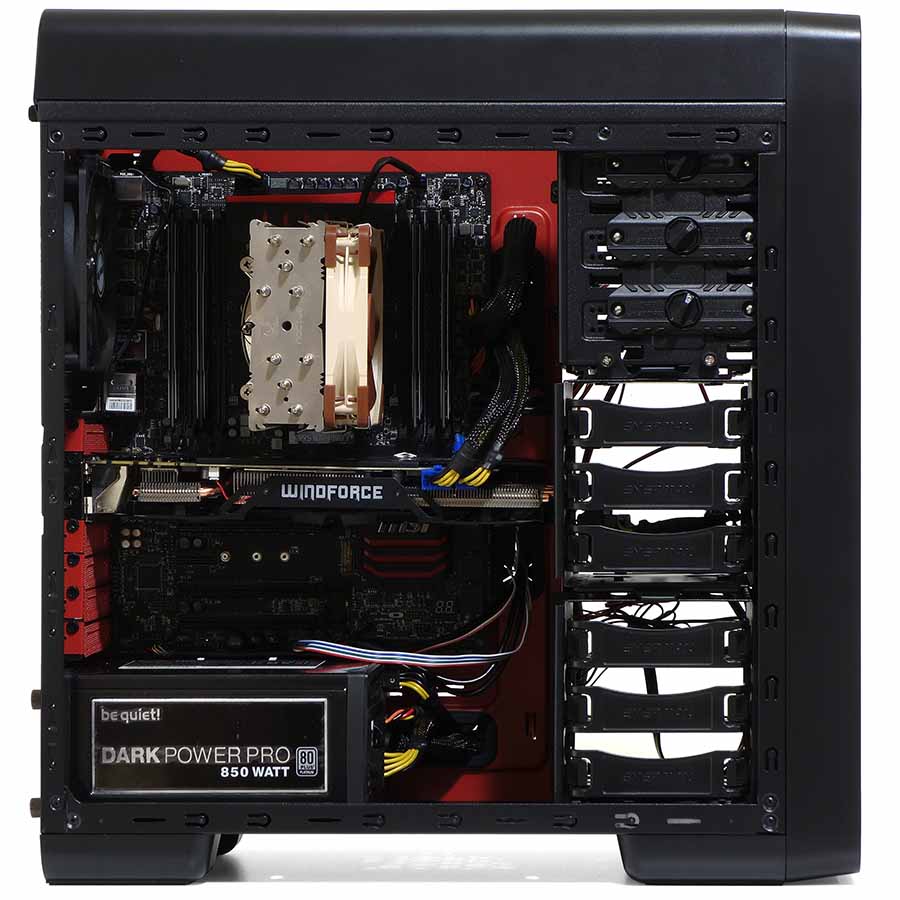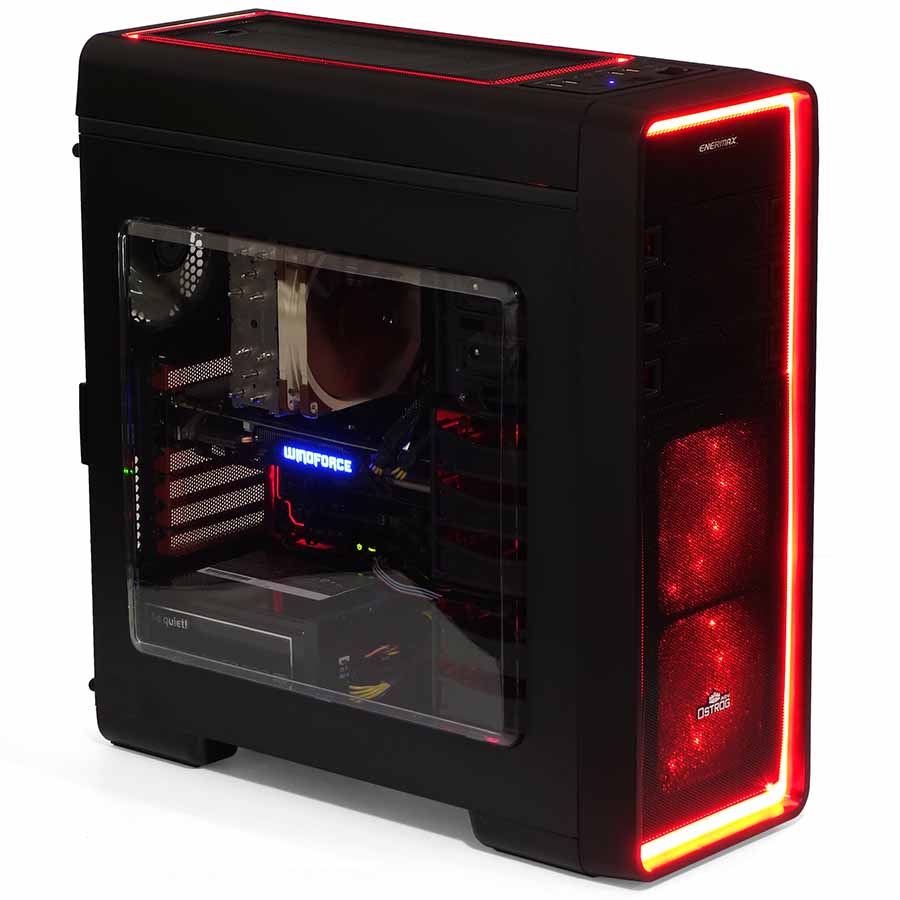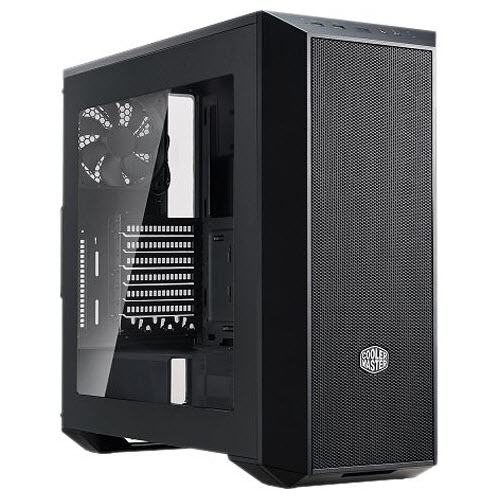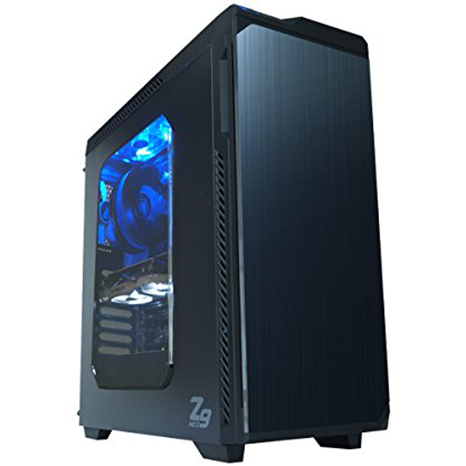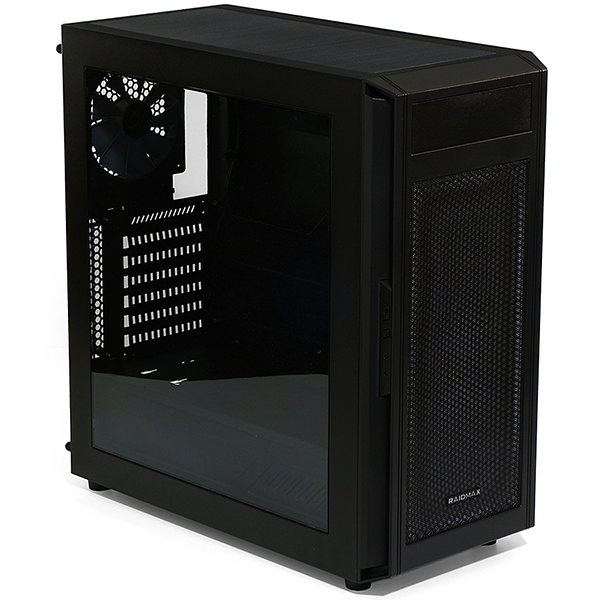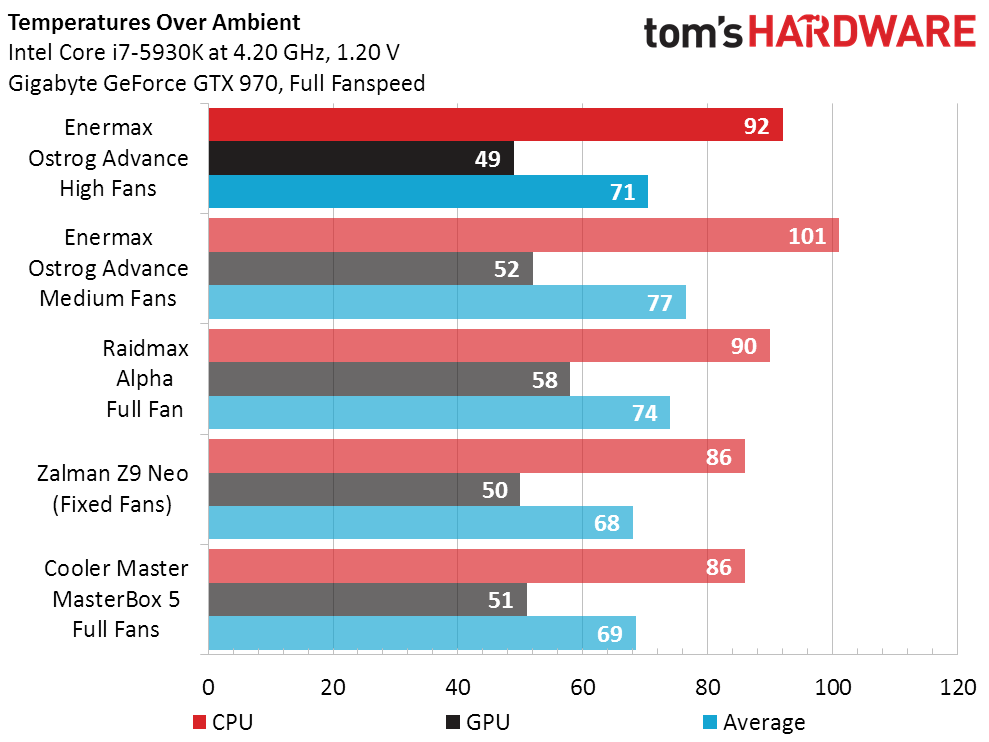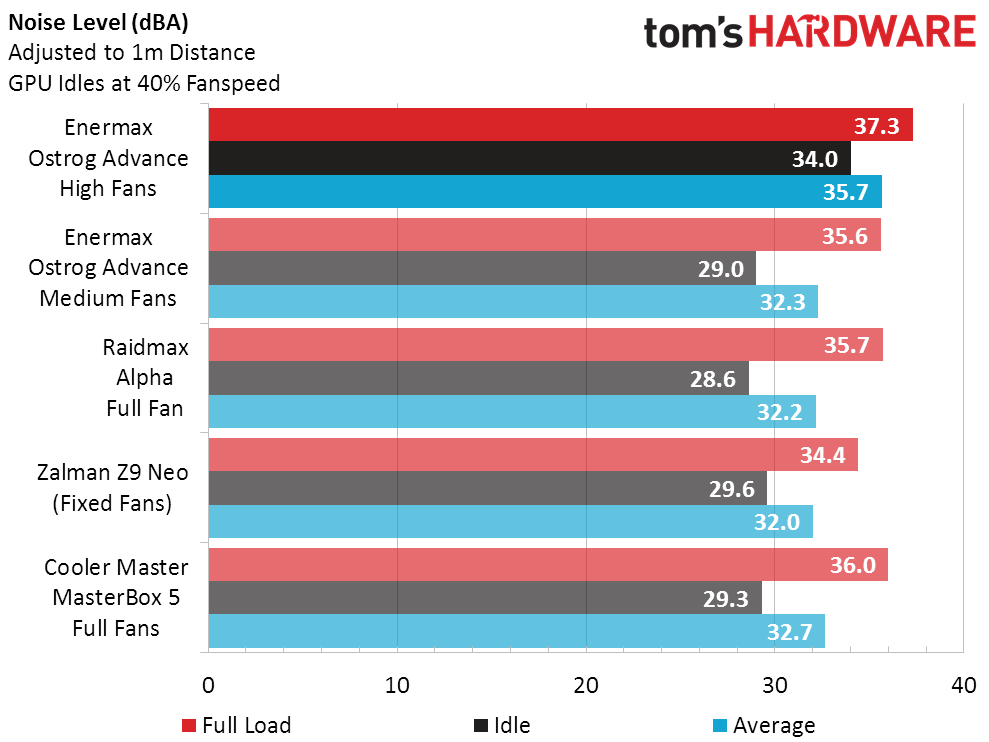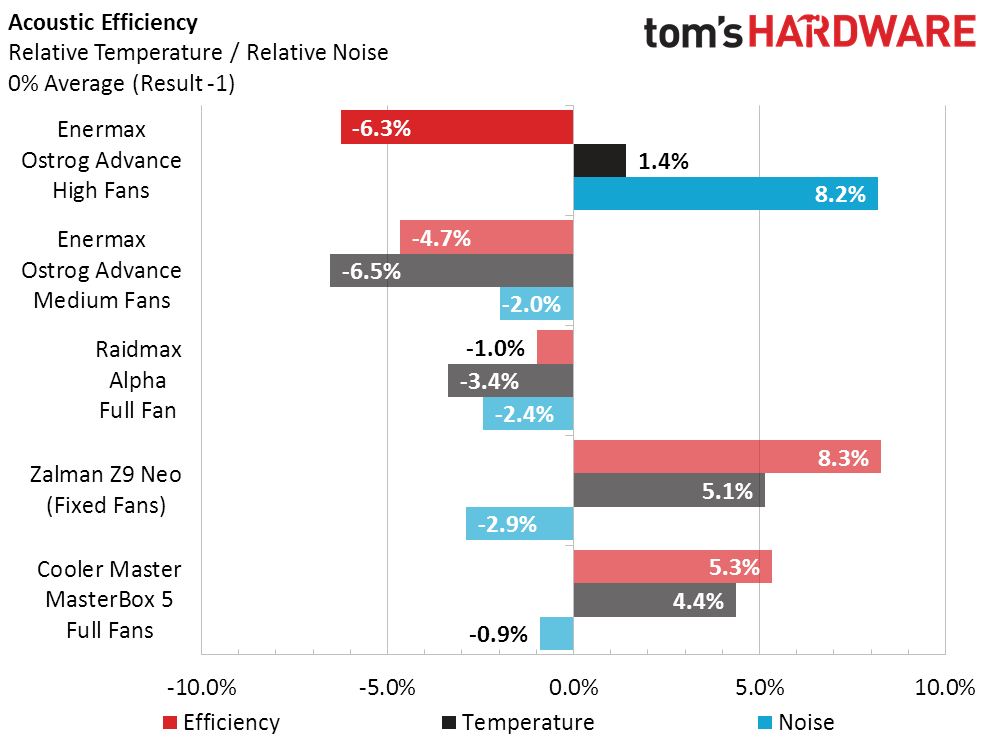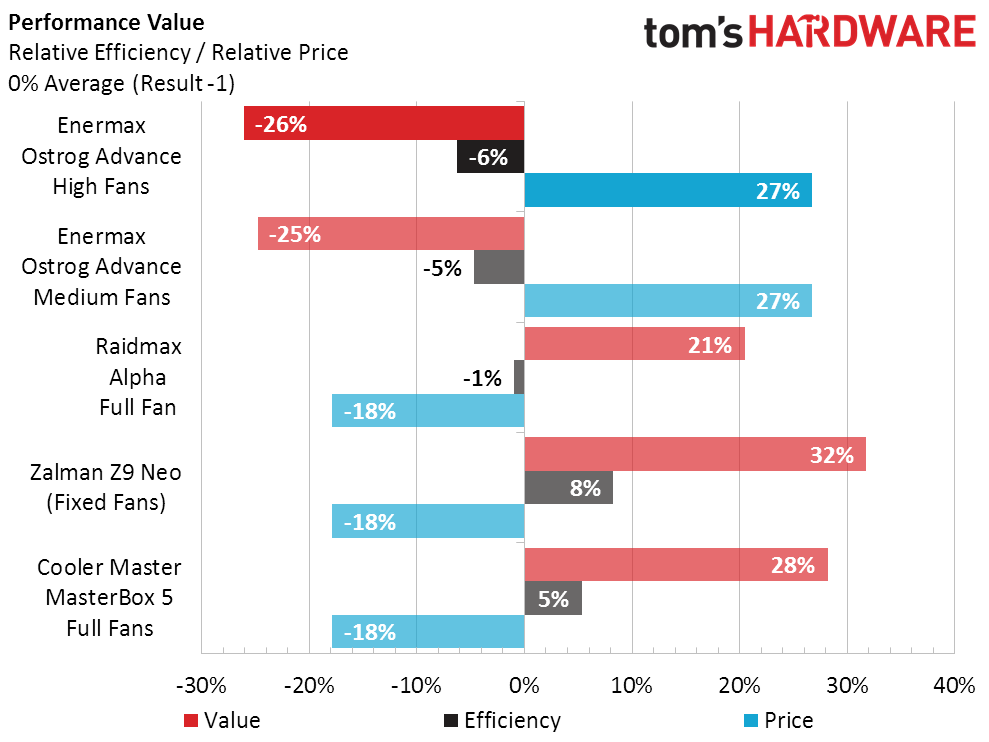Enermax Ostrog Advance ATX Mid-Tower Case Review
The Ostrog Advance (Ostrog ADV) offers traditional features with modern bling. Let's see how this mid-tower case performs.
Why you can trust Tom's Hardware
Hardware Installation, Evaluation And Final Analysis
The Ostrog ADV includes four radiator screws, a PC speaker, and several cable ties in addition to the expected M3 and #6 case screws.
Separate SATA type power cables feed case lighting and the fan controller, and the controller features an extra output that’s connected to the exhaust fan in today’s test.
The Ostrog ADV’s 11.7” of clearance is barely enough to fit the slightly oversized GTX 970 in today’s test, but that same clearance also allows it to fit a wide range of ~10.7” premium-priced enthusiast motherboards that most manufacturers lazily refer to as “EATX.” Full EATX boards (13”-deep) won’t fit however.
While the lights aren’t excessively bright, capturing the true redness of the LEDs was difficult, because alternative camera settings caused the darker components to fade into the shadows.
We haven’t tested an inexpensive bay-filled case in a couple years, so the Enermax Ostrog ADV is instead compared to our closest-matching, less-filled cases using our standardized hardware configuration. The Raidmax Alpha has only one external bay but adds RGB lighting control, the Z9 Neo has fewer lights and two external bays, and the MasterBox 5 has no lights and two places to add external bays.
Test Results
High temperatures for the Ostrog ADV were tracked down to an exhaust fan that, while moving at normal speed, didn't feel like it was putting out much air. Turning down the fans to "medium" caused the expected temperature increase, and the "low" setting forced thermal throttling regardless of ambient conditions.
Regardless of its poor thermal performance, the Ostog ADV wasn’t able to advance in noise testing. Further examination revealed that the air simply wasn’t moving efficiently through the drive cages and out the exhaust fan. People who already own the case and have attempted to install hot hardware may find an airflow benefit by removing the center drive cage.
Get Tom's Hardware's best news and in-depth reviews, straight to your inbox.
A combination of high heat and high noise push down the Ostrog ADV’s cooling-to-noise ratio.
Unfortunately, the price isn’t even low enough to put the Ostrog ADV ahead in our value calculations. Buyers must truly require its extra drive bays to justify its purchase.
Many of our readers aren’t using any kind of LGA 2011-v3 processor, let alone one that’s been overclocked, and we can’t tell anyone running cooler hardware to scratch the Ostrog ADV from their list. However, our tests have a significant performance component that prevents it from winning any awards.
MORE: Best Cases
MORE: All Case Content
MORE: In Pictures: 40 Unusual Computer Case Mods
- 1
- 2
Current page: Hardware Installation, Evaluation And Final Analysis
Prev Page Introducing The Ostrog ADV-
shrapnel_indie Nice to see the Ostrog updated. Unfortunately, the update included some poor performance numbers (especially temperatures.) Was the original just as bad in cooling?Reply -
MysteryFlavor This case looks nearly identical to my thermaltake S71, down to the internals. Rebrand perhaps?Reply -
Crashman Reply
Well, it's actually supposed to be red, but it's a bright red so it's closer to the orange scale than, say, barn red. And the LEDs are red too, they just "blew out" the photo. For a better color reference, see the images on the Ostrog ADV web page.19465665 said:Lovely Orange color and no Orange LEDs.
I don't know why the airflow out the back was so poor, but yes I checked it and yes it was low. You would think that the intake fans would boost it, but I have a feeling the positive pressure was just bypassing the CPU cooler and going out the top vent on the case. The original performed better.19466338 said:Nice to see the Ostrog updated. Unfortunately, the update included some poor performance numbers (especially temperatures.) Was the original just as bad in cooling?
Most case brands have limited to no manufacturing capability, and the chances of both coming from the same ODM are better than zero.19467238 said:This case looks nearly identical to my thermaltake S71, down to the internals. Rebrand perhaps?
-
WINTERLORD would really like to know what the weight of the upper drive cage is? can you wiegh it plz :)Reply -
WINTERLORD i like this pc case alot but wondered bout the weight. the wioeght listed is the wieght without the box or packaging right?Reply -
Crashman Reply
Correct.19469115 said:i like this pc case alot but wondered bout the weight. the wioeght listed is the wieght without the box or packaging right?
